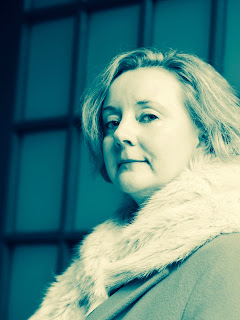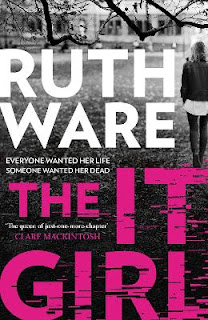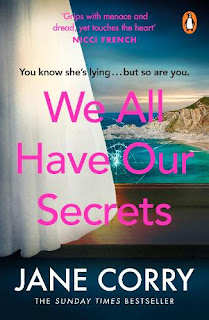Meet Emma Flint Author Of Other Women
Based on a true story, Other Women, Emma Flint's second crime thriller following her highly successful debut Little Deaths, is a haunting tale of passion, jealousy and how the lives of two women in the early 1920s interconnected with tragic consequences.
In this exclusive interview Emma reveals how she came across the idea for the novel, the research she did, developing her characters, her writing process, favourite historical true crime case and why they attract her.
Download the ebook of Other Women from Amazon or buy the paperback from Thriller Women's list at Bookshop.org. NB: if you buy books through this link we may earn a commission from bookshop.org, whose fees support independent bookshops.TW: Congratulations on the publication of your second novel Other Women. Like your debut Little Deaths it's based on a real-life crime case. What is it about true crime that attracts you?
EF: Thank you! I’m fascinated by crime for two reasons. I think most of us have experienced a split second of real furious anger – how often do you hear someone say, “Oh, I could have killed him!” What interests me is the mind of a person who takes that to the extreme – who manages to hold on to that fury or that desire for revenge long enough to plan and commit murder, and then to remain cool-headed enough to (attempt to) cover up the crime afterwards. With Other Women, I go much more deeply into the mind of the killer than I did in Little Deaths – it wasn’t a pleasant experience.
The second reason that I’m interested in true crime – particularly historical crime – is the window it offers on a very specific period of history. Witness statements or newspaper articles about a crime give details about the time and the place that a crime occurred that you just don’t get elsewhere. In the statement of a man who murdered at least three of his wives, I learned that you could buy a paper bag of tomatoes on a Sunday evening in north London in 1914. There’s nowhere else I could have got that kind of detail, which is such a gift to a novelist.
TW: How did you hear of the case of the woman murdered by her lover, and what research did you do for the novel?
EF: I first read about this case in my late teens and I remember wondering why most accounts focused more on the killer than on his victims. I wondered about the terror his victims must have felt when they realised what lay behind his attractive appearance and his superficial charm.
I think at the heart of every novel is a question that the writer wants to explore (What would happen if…? How would it feel to…?) – when I came back to the case in my forties, my initial question was: Why would an intelligent, middle-aged, respectable woman – who had so much in her life that was positive and good – risk everything that mattered to her for a man who was already married? That was my starting point, so I researched Bea’s life first of all. I read a lot of non-fiction about London in the 1920s, and a lot of novels published in the mid-1920s to learn about ordinary life then, including office life between the wars.
I read all the newspaper accounts I could find about the case, and I went to all the main scenes in the book: the street where Bea lived, the street where her office was, the street where Tom and Kate lived, and the location of the cottage in Sussex where Bea met her death. I also went to the East Sussex Record Office and read the original statements from all those involved in the case, and looked at the original photographs. Seeing the lists of belongings found in the cottage, reading the witness statements, hearing the tiny details of all those forgotten lives, really brought the case to life.
TW: The title Other Women refers to single women after WW1 who had to earn their own living without a husband. The characters of Beatrice, her sister and Kate portray both the pluses and minuses of marriage and single life. Beatrice and Kate's lives are intertwined even though they only meet briefly meet once. How did you plot the evolution of their characters?
EF: The characters of Bea and Kate weren’t hard to develop – both were fairly fully-formed early on in the writing process. It was weaving their narratives together that was the difficult part: I think I spent a full year during lockdown plotting, replotting, rewriting and restructuring.
Once I understood that I wasn’t simply retelling Bea’s story through Kate’s narrative, but that Kate’s narrative was more about exploring Kate’s changing view of her marriage and of her husband, it fell into place more easily.
TW: Do you prefer to write male or female characters? Which was your favourite character to write and why?
EF: Ruth Malone and her best friend Gina were my favourite characters in Little Deaths, and Bea was my favourite character to write in Other Women. I don’t think it’s necessarily because they’re female, but because all three were people I wanted to spend time with. When you’re spending months or years inside the head of a character, you don’t have to like them, but you do have to find them fascinating. You have to be willing to challenge them and to put them in difficult situations and see how they respond.
I like Bea: I admire her courage in changing her life in early middle-age, at a time when it was very unusual to do that. I like her imagination and her sensuality and her curiosity about the world.
TW: Tell us about your writing process - do you write sections of the novel then piece them together or do work from the start to the end? What's your writing routine?
EF: I write about 30 or 40 thousand words to explore my main characters first of all. I put them into scenes that I’m not necessarily intending to include in the novel, just to see how they react. I ask them questions – how do they drink a cup of tea? What would they do if someone spilled coffee on them in a café? How would their reaction differ if it was their sister or their husband or an attractive stranger? How do they choose clothes? Do they feel self-conscious when they walk down the street? Do they enjoy sex? How do they argue?
It’s important to me at this point to let some air into the characters: I read a lot, I go to galleries, I watch films. I think about what their reactions would be to the things I’m experiencing: this helps me get to know them inside out.
When I feel I know them as well as I need to, then I go away and start to plot out the story, and then the individual scenes I need to write to tell that story. If I’m lucky, some of the scenes I’ve written will fit that plot, in part or in full. Then I start to fill in the gaps.
I absolutely don’t write from start to finish – when I sit down each morning, I choose the scene I’ll write that day. That leaves room for surprises and detours, which I love.
When I get to the end of that first draft, I leave it for a few weeks to percolate, then read it through, looking for the gaps and the overwriting. I know now what my bad habits are – I’m looking here for irrelevant backstory, for scenes that are full of nice prose but don’t move the story or the character forward. Then I start to cut and to rewrite. Around draft seven or eight, I’ll send it to my agent and my editor, and get some feedback.
TW: Are there more historical crime cases you'd like to use as a basis for future books?
EF: Absolutely! I’ve started my third novel, and I have a clear idea of what I want to write in books four and five. In all cases, it’s the main character and their domestic situation that I’m using as a starting point, rather than the case itself.
TW: Which crime/thriller books have you read recently that you'd recommend?
EF: I’ve been re-reading lots of Victorian novels as I limber up for book three, but in terms of contemporary crime fiction, I’ve recently read and would recommend The Things We Do To Our Friends by Heather Darwent, The Clockwork Girl by Anna Mazzola, and Caroline Lea’s astonishing Prize Women.
EF: Absolutely! I’ve started my third novel, and I have a clear idea of what I want to write in books four and five. In all cases, it’s the main character and their domestic situation that I’m using as a starting point, rather than the case itself.
TW: Which crime/thriller books have you read recently that you'd recommend?
EF: I’ve been re-reading lots of Victorian novels as I limber up for book three, but in terms of contemporary crime fiction, I’ve recently read and would recommend The Things We Do To Our Friends by Heather Darwent, The Clockwork Girl by Anna Mazzola, and Caroline Lea’s astonishing Prize Women.
TW: What's next for Emma Flint? Any exclusives on what you're working on now?
My next book is set in the 19th century and is also based on a real crime. I hope it’s much darker than anything I’ve written so far.
Quick fire questions:
My next book is set in the 19th century and is also based on a real crime. I hope it’s much darker than anything I’ve written so far.
Quick fire questions:
TW: Favourite historical crime case?
EF: Probably the Thompson and Bywaters case (1922). Edith Thompson and Freddie Bywaters were convicted of the murder of Edith’s husband. There was no evidence that Edith was involved in the murder, and Freddie Bywaters himself said she had no prior knowledge of it.
Edith Thompson was executed because the police found love letters from her to Bywaters: she was condemned for her adultery and her immorality, not because she committed murder. I’d love to write a novel about it, but Sarah Waters and Jill Dawson have both written such sublime books about the case (The Paying Guests and Fred and Edie, respecitvely), there’s very little left to say! Even PD James and Agatha Christie referenced the case in their books.
TW: Favourite crime writer of the past?
EF: That’s a tough question. I love PD James and Dorothy Sayers, but I’m going to go with Agatha Christie because her books have been such a source of comfort at various times in my life.
TW: Favourite current crime/thriller writer?
EF: Again, that’s a hard question to answer with just one name. Recently I’ve loved the Tuva series by Will Dean, and I’ve just finished re-reading the Maeve Kerrigan novels by Jane Casey for the third time. But I’m going to go for Denise Mina and Tana French, on the basis I’ll buy anything that either of them writes without even looking at the blurb.
TW: Favourite place to write?
EF: A library. I need absolute silence, no screens, and to be surrounded by people working.
TW: Favourite way to relax after writing?
EF: A good crime drama on TV. Because I write historical crime, watching a contemporary series means I can really relax and not feel like I need to take notes! I like anything with strong female characters: the original Prime Suspect, Scott and Bailey, Vera, Happy Valley.
EF: Probably the Thompson and Bywaters case (1922). Edith Thompson and Freddie Bywaters were convicted of the murder of Edith’s husband. There was no evidence that Edith was involved in the murder, and Freddie Bywaters himself said she had no prior knowledge of it.
Edith Thompson was executed because the police found love letters from her to Bywaters: she was condemned for her adultery and her immorality, not because she committed murder. I’d love to write a novel about it, but Sarah Waters and Jill Dawson have both written such sublime books about the case (The Paying Guests and Fred and Edie, respecitvely), there’s very little left to say! Even PD James and Agatha Christie referenced the case in their books.
TW: Favourite crime writer of the past?
EF: That’s a tough question. I love PD James and Dorothy Sayers, but I’m going to go with Agatha Christie because her books have been such a source of comfort at various times in my life.
TW: Favourite current crime/thriller writer?
EF: Again, that’s a hard question to answer with just one name. Recently I’ve loved the Tuva series by Will Dean, and I’ve just finished re-reading the Maeve Kerrigan novels by Jane Casey for the third time. But I’m going to go for Denise Mina and Tana French, on the basis I’ll buy anything that either of them writes without even looking at the blurb.
TW: Favourite place to write?
EF: A library. I need absolute silence, no screens, and to be surrounded by people working.
TW: Favourite way to relax after writing?
EF: A good crime drama on TV. Because I write historical crime, watching a contemporary series means I can really relax and not feel like I need to take notes! I like anything with strong female characters: the original Prime Suspect, Scott and Bailey, Vera, Happy Valley.
Thanks Emma!
More about Other Women:
In a lonely cottage on a deserted stretch of shore, a moment of tragedy between lovers becomes a horrific murder. And two women who should never have met are connected for ever.Six years after the end of the Great War, a nation is still in mourning. Thousands of husbands, fathers, sons and sweethearts were lost in Europe; millions more came back wounded and permanently damaged.
Beatrice Cade is an orphan, unmarried and childless - and given the dearth of men, likely to remain that way. London is full of women like her: not wives, not widows, not mothers. There is no name for these invisible women, and no place for their grief.
Determined to carve out a richer and more fulfilling way to live as a single woman, Bea takes a room in a Bloomsbury ladies' club and a job in the City. Then a fleeting encounter changes everything. Bea's emerging independence is destroyed when she falls in love for the first time.
Kate Ryan is an ordinary wife and mother who has managed to build an enviable life with her handsome husband and her daughter. To anyone looking in from the outside, they seem like a normal, happy family - until two policemen knock on her door one morning and threaten to destroy the facade Kate has created.




Comments
Post a Comment